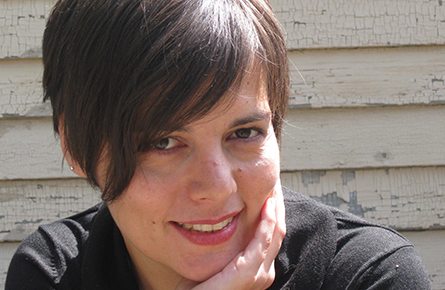Rogers Writers’ Trust Fiction Prize nominees: Lynn Coady
Read an excerpt from Hellgoing
Share
The $25,000 Rogers Writers’ Trust Fiction Prize, the last of Canada’s major literary fiction awards to choose its 2013 winner, will do so on Nov. 20. Up for the prize are Lynn Coady, for Hellgoing, which has already won the Scotiabank Giller prize; Lisa Moore’s Caught; A Bird’s Eye by Cary Fagan; A Beautiful Truth by Colin McAdam; and Krista Bridge’s The Eliot Girls. In the lead-up to the awards ceremony, Maclean’s is sharing excerpts from all five shortlisted works, introduced by the writers’ thoughts on their literary influences:
Read comments and excerpts from fellow nominees:
Krista Bridge, The Eliot Girls
Cary Fagan, A Bird’s Eye
Colin McAdam, A Beautiful Truth
Lisa Moore, Caught

|
“I was really influenced by Jean Rhys, who is kind of a character in one of my stories in Hellgoing. As a young writer looking for role models, I went through my jazz age period and was really taken with the work of Hemingway and Fitzgerald. But it depressed me that I wasn’t seeing any women writers from that era who felt as worthy in terms of how significantly they seemed to be reshaping the novel. Then I discovered Jean Rhys, who completely fit the bill and there was something about how neglected she was in her era that made me feel very moved by and passionate about her work. I liked her wry humour, and her fearlessness in writing about female helplessness and insecurity – what it was like to be an aging, alcoholic flapper in Paris. Also the way she didn’t necessarily eschew the trappings of femininity but, at the same time, didn’t let them define her or hamstring her as an artist. Discovering Jean Rhys marked the first time I realized there did in fact exist women who wrote and thought in the same way I did (or wanted to), but that these writers didn’t get held up and celebrated to the same extent as their male contemporaries – I was going to have to go looking for them.”
An excerpt from Lynn Coady’s Hellgoing:
I remember Mr. Hope from when he brought the boy with an eyeball falling out to be gawked at by our Grade One class….
Mr. Hope’s eyes were unspeakably blue. He was shaped something like the letter D. A pot-belly would have been okay. My dad had one of those and it was okay. But Mr. Hope was all belly, all outward thrust. And his skin seemed to hang off his face the way Teddy’s eyeball hung from its socket…
[Now], he glared at us until we settled, just as he had done in Grade One, and once all the noise and motion had been driven from the room he blinked and scowled and asked us: What is love, people?
Hands shot up. We could play this game—easy. We were children. We knew all about love.
Mr. Hope called on a few of us. He didn’t know anybody’s names, so he gave us nicknames.
“You: ponytail.”
“Love is when you love your mommy.”
“No. That’s not what love is, that’s something you do with it. Try again. You: eyebrows.”
“Love is when you feel your heart—“
“I’m not asking for examples of love. When you say ‘love is when this, love is when that,’ you people are just giving me examples. Do you know what examples are? Do you understand the difference? If I ask you what is a rock, you don’t say: ‘A rock is when you throw a rock and hurt somebody.’”
Teddy’s face materialized in my mind; his mutilated face. And I remember thinking: But that’s exactly what a rock is. In that particular case. And next thing I knew the rock was in my chest—in it and on it, making it difficult to breathe because it was becoming clear that there was something in me that was always rising in opposition to Mr. Hope—that I was doomed to disagree with him no matter how much I wanted to appease.
Around the room, children’s hands began to droop like unwatered flowers. If we weren’t allowed to give examples of love, we were at a loss for how to explain it.
Copyright © Lynn Coady, 2013. Excerpt reproduced with the permission of House of Anansi Press. www.houseofanansi.com. All rights reserved.